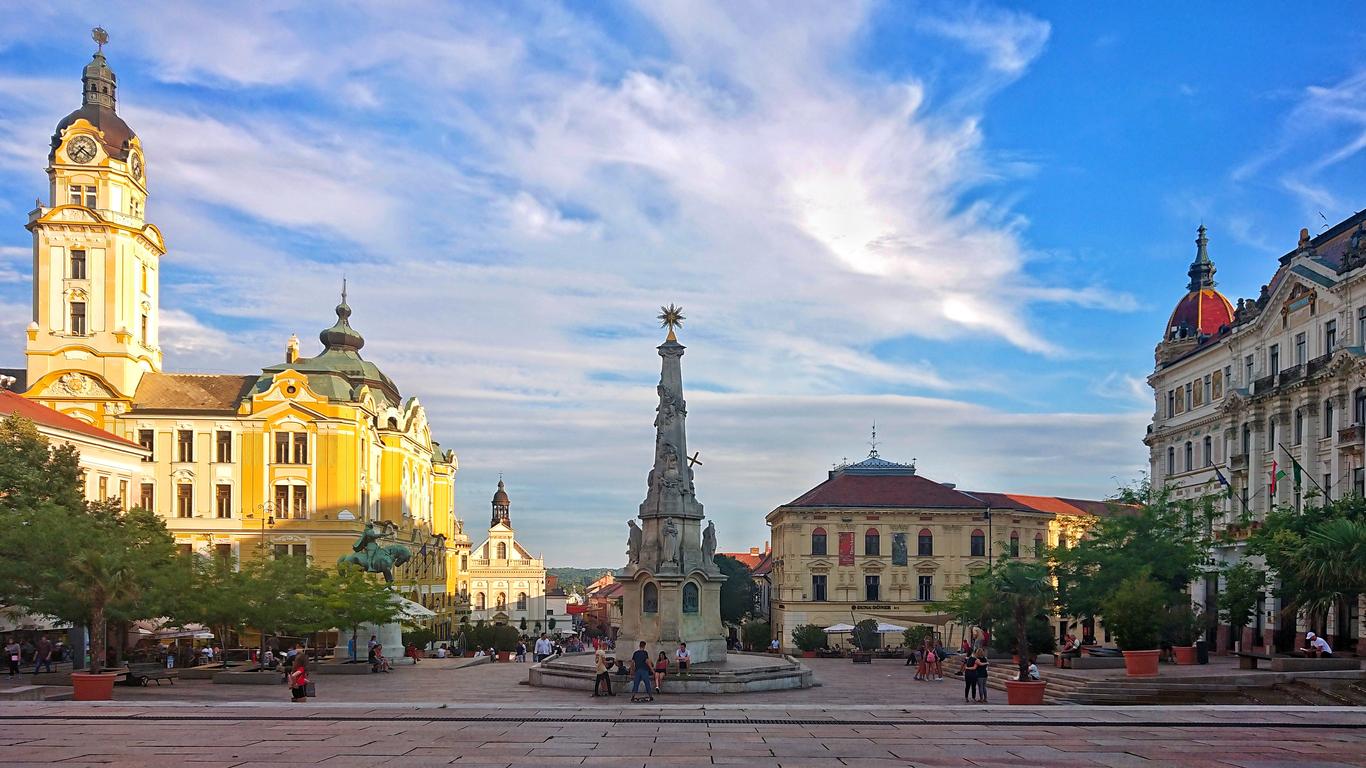Located just a stone’s throw from Hungary’s border with Croatia, Pécs is an ancient city that flourished as the Roman settlement of Sopianae. It’s dotted with centuries-old mausoleums and Ottoman monuments and is home to the oldest university in the country. In the 19th century, Pécs became renowned for producing ceramic decorations used in Hungary’s Art Nouveau architectural movement.
Things to do in Pécs
In the heart of the city is the monumental Pécs Cathedral, which was built atop the foundations of a 4th-century Christian basilica. It combines Romanesque, Gothic and Renaissance architectural elements and watches over bustling Szent István Square. Also not to miss is the domed Church of the Blessed Virgin Mary, which was built as a mosque by the Ottomans in the 16th and 17th centuries.
While Pécs boasts an abundance of Roman ruins, the most fascinating is the Early Christian Mausoleum, which dates from the 4th century and is designated as a UNESCO World Heritage Site. Designed across two levels, its lower chamber features three marble sarcophagi and beautifully preserved frescoes that depict the Tree of Life and the Fall of Adam and Eve.
Occupying one of the oldest buildings in Pécs is the Zsolnay Museum, which celebrates the life and legacy of the 19th-century ceramicist, Vilmos Zsolnay. Learn about the architectural and ornamental decorations that were produced at his family’s factory and his involvement in the Hungarian Secession movement. The museum also exhibits ceramics that Zsolnay brought back to Hungary from Egypt and Persia.
Getting around Pécs
Pécs is around 2.5 hours’ drive from Budapest and Budapest Ferenc Liszt International Airport, which has flights to destinations across the globe. Trains connect from the Hungarian capital to the Pécs railway station and buses travel throughout the city.





